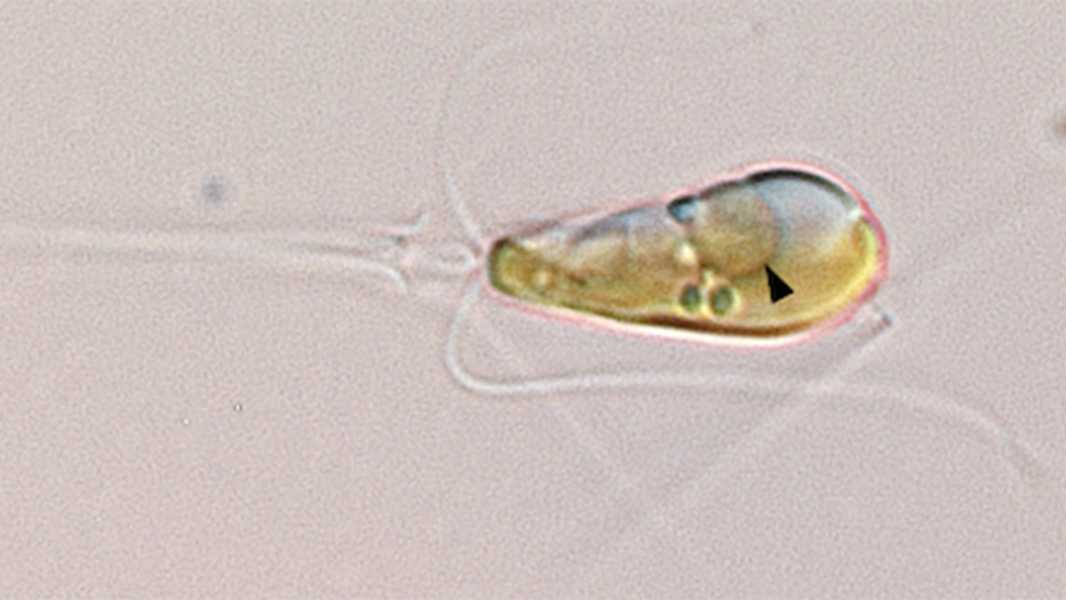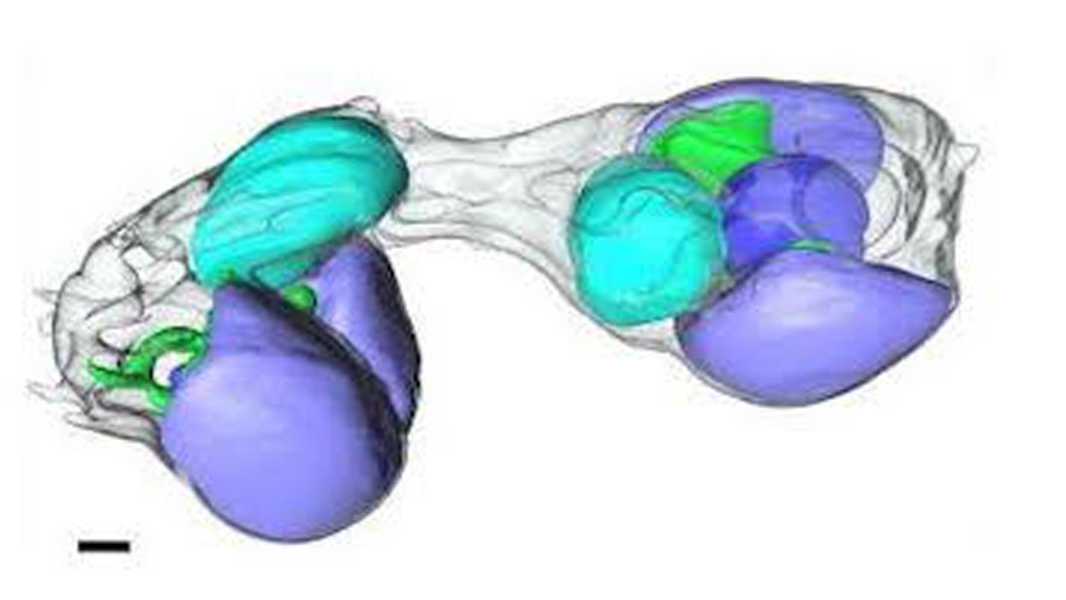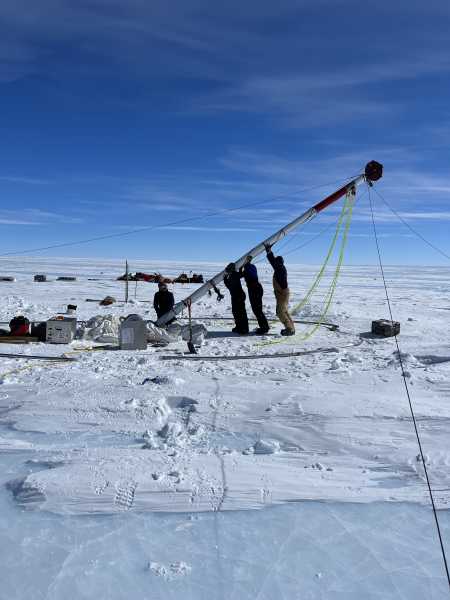
This microscopic image shows a seaweed cell, with a black arrow pointing to it, representing the newly discovered nitroplast organelle. (Image credit: Tyler Cole)
In a major discovery, scientists have identified for the first time a structure in complex cells that can extract nitrogen from the atmosphere and convert it into a form the cell can use.
The new part of the cell has been dubbed the “nitroplast.” According to two recent studies, researchers suggest it likely evolved about 100 million years ago.
Nitroplast most likely originated from a bacterium in the ocean after the microbe was engulfed by an algae cell. It was previously thought that bacteria and algae existed in a symbiotic relationship, with the microbe providing nitrogen in a form usable by the algae and the algae providing the microbe with a place to live.
However, it turns out that the microbe has long since transformed, becoming a full-fledged cellular structure or organelle, with a metabolism directly linked to the metabolism of algae.
“It's extremely rare for organelles to form from objects like this,” said Tyler Cole, a postdoctoral researcher at the University of California, Santa Cruz (UCSC) and lead author of one of two recent studies that identified the nitroplast.
The discovery is only the fourth known example in Earth's history of “primary endosymbiosis,” a process in which a eukaryotic cell — a cell with DNA in its nucleus, like all animals, plants, and fungi — engulfs a prokaryotic cell, which lacks a nucleus. In this case, a eukaryotic algae cell engulfed a prokaryotic bacterial cell.
“The first time we think this happened, it was the beginning of all complex life,” Cole said, referring to the evolution of mitochondria, the powerhouses of cells, about 1.5 billion years ago. “Everything more complex than a bacterial cell owes its existence to this event.” That includes humans.
The second known instance of endosymbiosis occurred about 1 billion years ago, leading to the formation of chloroplasts, which are necessary for photosynthesis, and initiated the evolution of plants. The third known situation may have given rise to a lesser-known organelle known as a chromatophore, a pigmented structure in the skin of cephalopods such as squid and octopuses that allows them to change color.
In 1998, scientists first identified a microbe that transformed into a nitroplast, although they did not yet realize that the microbe was a true organelle.

This image shows a Braarudosphaera bigelowii cell dividing into two
Sourse: www.livescience.com





